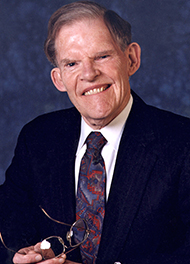Tony Gentilucci Welcome Video
Book Summary
Statistics show that the average person watches almost 5 hours of television per day – that’s more than 1,700 hours a year. It’s obvious from these statistics that television is doing something right, for people to be tuned in for that amount of time. Stop Preaching and Start Communicating has nothing to do with television’s content. Instead, it has everything to do with examining television as an effective communications medium, and how public speakers can learn from it. In this book you will learn how to:
- define and get to know your target audience
- begin and end a message that gets attention and leaves them breathless
- communicate without notes
- communicate just one memorable big idea
- communicate to transform rather than to simply inform
Endorsements

Andy Stanley – Senior Pastor, North Point Community Church – Atlanta, Georgia
I think I’ve seen or read just about every book written on the topic of preaching. But Stop Preaching and Start Communicating is in a category by itself. Tony’s approach is fresh and engaging. Best of all, it is extremely helpful. Writing about “talking” is a bit like writing about riding a bicycle. There are some practical limits. But Tony stretches those limits and goes right to the to the heart of what it means to be an effective communicator in the twenty-first century.

Michael Duduit – Executive Editor – Preaching magazine
This book is packed with practical ideas that can help us become more effective communicators.

Sid Buzzell – Dean, School of Theology, Colorado Christian University
When we do something as important as presenting God’s Word, we search for things that help us do it better. Tony’s book teaches us how to communicate effectively by communicating effectively. Stop Preaching and Start Communicating really does help us “do it better.”

Van Mylar – Former SVP, FamilyNet Television & Radio Network
In our instant messaging and video saturated world, communicating and not preaching is
paradoxically more important than ever before when sharing God’s Word with today’s
world. If you want to effectively speak to today’s audiences – read Tony’s book.
Book Review
Book Review of:
Stop Preaching and Start Communicating as Appeared in Preaching magazine – July 2010 Issue
by Michael Duduit, Executive Editor, Preaching magazine
 Stop Preaching and Start Communicating goes well with the theme of the John Maxwell interview in this same issue, because it also addresses the reality that it is not enough to talk—we must find a way to speak so people listen.
Stop Preaching and Start Communicating goes well with the theme of the John Maxwell interview in this same issue, because it also addresses the reality that it is not enough to talk—we must find a way to speak so people listen.
Tony Gentilucci is theologically trained—including a D.Min. in preaching with Haddon Robinson, who wrote the foreword to this book—but his major work has been in television and radio. Recognizing the powerful influence of broadcast media in our culture—the average person watches more than 1,700 hours of television a year compared to perhaps 200 hours of preaching heard by a faithful church member—Gentilucci explores why television is such an effective communications medium and how preachers can learn from it.
One suggestion he offers is to determine who your target audience is. TV producers have a target demographic they shoot to reach; they are glad to have others listen, as well; but they program for that target audience. As Bill Cosby observed, “I don’t know the key to success, but I know the key to failure is trying to please everybody.”
Gentilucci encourages pastors to ask this targeting question of themselves: “Who are you as a church? Who are you appealing to? How are you perceived, not only by the people who attend your church but, more importantly, by the people on the outside?” He offers the example of Andy Stanley as one who “gets” the question. Stanley told him: “In terms of the audience who I’m speaking to, it’s the 35-year-old guy who’s married and has some young kids and is in business; that’s the guy. Because if I can talk to the guy, whether it’s the principle of the message or the application of the message, I’m going to get the whole family. The reason I’m targeting the guy is because the person that’s most resistant to getting up on Sunday morning is that 35-to-40-year-old guy. He’s got a measure of success. He’s got options on Sunday. He’s not against God. He’s not even against Jesus, but we’re taking a block of his time. And his time is precious because he works hard. He may be out of town a lot, and now he’s thinking, ‘You want me to get up and get dressed and go somewhere? It better be good.’ … It’s a time issue. It’s a priority issue. It’s an ‘I got options’ issue. So I feel like if I can talk to that guy, he’ll get his wife there, and the women in turn will get their children there.” The author offers a variety of recommendations for getting to know your audience, as well as ways to determine how your audience will be evaluating you as a church and as a communicator.
Another helpful insight Gentilucci offers is the way TV programs have changed in recent years, no longer do programs start with theme music, cast list and such. In today’s programs, “the action begins immediately … If you miss the introduction, you’ll miss the murder they’re trying to solve or the situation they’re trying to deal with. It’s only after the introduction to the plot that the theme music plays and the credits are shown. The same elements are still there, but the order has been reversed … Why? The answer is simple: to get your attention as quickly as possible so you won’t click your remote and go off to watch some other program.”
Gentilucci notes that the formula is:
ATTENTION, INTEREST, NEED
That formula also will work for preaching, he says. The key to getting their attention is to “aim at their interest.” He says, “What we need determines what we’re interested in. And what we’re interested in determines what we give our attention to. Attention, interest and need are three essential elements for every good introduction.”
Gentilucci addresses a variety of other issues, including use of language, speaking conversationally, storyboarding the sermon and much more. This is a book packed with practical ideas that can help us become more effective communicators.
Foreword
Foreword by Haddon Robinson
 There are times when I wish my students had never heard of “preaching a sermon.” When many of them think of “preaching,” they picture someone in a robe talking in a stained-glass tone of voice saying things that matter as though they don’t. Others see an overweight man gasping for breath hollering at people as though they were deaf. Inhabitants of the 21st century don’t trust preachers and don’t like sermons. Sermons use a strange vocabulary that only those initiated who know the code can understand. Preachers ask questions no one ever asks or solve problems that have never arisen and then provide answers relatively few listeners take seriously.
There are times when I wish my students had never heard of “preaching a sermon.” When many of them think of “preaching,” they picture someone in a robe talking in a stained-glass tone of voice saying things that matter as though they don’t. Others see an overweight man gasping for breath hollering at people as though they were deaf. Inhabitants of the 21st century don’t trust preachers and don’t like sermons. Sermons use a strange vocabulary that only those initiated who know the code can understand. Preachers ask questions no one ever asks or solve problems that have never arisen and then provide answers relatively few listeners take seriously.
Is this a caricature? Of course it is. But it is not far off from the picture people in the pew or people on the pavement have of those of us who deliver sermons. In their minds, the hour from eleven to twelve on Sunday morning ranks as the most boring hour of the week. Jesus Christ is the most fascinating person in the universe, but somehow the way He is introduced each week betrays His greatness.
Perhaps we preachers might get more across if instead of preaching a sermon we thought of ourselves as communicating a message. If we approached our task with that assignment, we might consider that no method is out of bounds that contributes to our purpose to make Christ known. As Paul, God’s special messenger, declared in his Corinthian correspondence, he will do anything short of sinning to communicate the gospel.
Isn’t it a bit short-sighted to conclude that we can learn nothing from the men and women in the media who will do anything, including sinning, to move the merchandise? Even though we may question both their message and some of their methods, we can “spoil the Egyptians,” aware that if we eat at their table we are wise to use a long spoon.
We must not sacrifice the message of the Bible to gain a hearing. What good is it to be more effective if in the process we have nothing significant to say to those who stop to listen? Content always trumps method, yet new methods or different methods can make old truth appealing.
If you are open to learning from secular theorists, then read this book. Tony knows the world of media and the Word of Christ. He brings the two together so that even as we continue to preach God’s Word we may do so more effectively.
Haddon W. Robinson, Ph.D.
Harold John Ockenga Distinguished Professor of Preaching
Gordon-Conwell Theological Seminary
Chapter Samples
ON THE AIR
“I think when people come to church
they sit there with clickers in their heads.
They turn you on or they’ll turn you off.
People will decide in the first 30 seconds if you’re going to be
interesting or boring. That’s why an introduction today carries
such important weight.”
—Haddon Robinson—
If you were around in the ’70s, I’m sure you’ll remember these lyrics to the introductory theme song of one of television’s mostwatched sitcoms (situation comedies):
Sunday, Monday, Happy Days.
Tuesday, Wednesday, Happy Days.
Thursday, Friday, Happy Days.
Saturday, what a day,
Groovin’ all week with you…25
You may have noticed that since Happy Days first went to air in 1974, a lot has changed in the way television programs are introduced. Back then, whether it was The Brady Bunch, Gilligan’s Island, Welcome Back Kotter or Little House on the Prairie, a show would begin with its theme music, photos of the cast and the names of the producer, director and writers. Today, whether you’re watching Law & Order SVU or a rerun of Friends, the action begins immediately. No intro theme music, no cast photos, no credits—just action, right off the top. If you miss the introduction, you’ll miss the murder they’re trying to solve or the situation they’re trying to deal with.
It’s only after the introduction to the plot that the theme music plays and the credits are shown. The same elements are still there, but the order has been reversed. First, they hook you with the “who done it” question, in the case of a Law & Order episode, then they segue into the show’s intro, followed by the first commercial break. Why? The answer is simple: to get your attention as quickly as possible so that you won’t click your remote and go off to watch some other program.
In fact, speaking of remotes, it was the remote control that forced TV producers to dramatically change the way they introduced television shows. Invented by a gentleman named Eugene Polley, born in Chicago, Illinois, it’s been said that he is the reason behind many of the large “behinds” these days, all because of his invention—the television remote control. If you were around during those pre-TV remote days, do you remember what it was like to change TV channels? You likely did one of two things. You either sat through what you were watching even though you didn’t like it. Why? Because the truth is you were too lazy to get up, walk over to the TV set and rotate the TV dial clockwise, while you stood there searching for something worthwhile to watch. Or, if someone was in the room with you, you begged and pleaded with them to get up and change the channel for you.
That all changed the minute remote controls came on the scene. You now had a choice to switch TV channels instantly while comfortably sitting in your favorite recliner. This caused TV producers to step back and rethink how they introduced television shows because they couldn’t afford losing your eye balls to another channel’s program. Hence, the new format to introduce television shows was born. And this is why today, television producers work hard at making the introductions to their programs as compelling as possible to hook you as fast they can.
Have you noticed how movies begin these days? They no longer waste time identifying in big bold letters the main stars or the director, producer or screenwriter. You get all of that information at the end of the movie. At the beginning there is perhaps a quick flash of the movie’s title, if that, and then it’s action! Whether it’s a movie or television program, the same principle applies: introductions need to engage the audience immediately.
ATTENTION, INTEREST, NEED
On any given Sunday morning, you are trying to get and keep people’s attention. Ultimately, you’re trying to take their voluntary attention and turn it into involuntary attention,26 to take the attention they give you because they have to, or are obligated to, and turn it into the attention they give you because they want to.
The truth is, capturing attention is difficult. The difficulty with focusing solely on attention is that it’s very short-lived:
This is the way attention works. It fades in and fades out. It flits from one stimulus to another, incessantly. We can give our primary focus to only one stimulus (or group of stimuli) at a time, and we can hold it there for only a few seconds; then it must shift. So attention is very transient and unstable, moving now to this, now to that, and now to something else. Every moment we are awake, we constantly and inevitably focus our attention upon one thing after another, either within ourselves or within our environment.27
Haddon Robinson adds:
Social scientists say that when you’re driving a car, the focus of your attention can change as much as 200 times a minute. In fact, even while sitting, listening to a speaker, the focus of one’s attention can change five to six times a minute. The reason for that is, a person can think five times faster than a person can speak. So there’s a lot of dead air that a speaker is not able to fill, which in turn makes attention a very fleeting thing.28
Therefore, even though our desire as speakers is to get and keep people tuned in, we can’t concentrate just on getting their attention. We have to go deeper and aim at their interest. If we can touch a person’s interest, we can focus his attention because we tend to give our attention to things that we’re interested in.
LET’S TALK
“What is irrelevant, in my opinion,
is our style of communicating the Bible.
We tend to still use the style from 50 years back,
which doesn’t match who we’re trying to reach today.”
—Rick Warren—
Whether it’s the 6:00 evening news or one of the numerous daily talk shows, television is a very conversational and relational medium. Even the set designs, complete with coffee tables and couches, contribute to their laid-back conversational presentation. The guests drink coffee while they’re being interviewed, and the viewing audience listens in, feeling like they’re part of the chitchat. There may be millions of people watching a particular show, but each viewer feels as if he or she is the only one they’re speaking to, because television has mastered the art of getting personal with its audience.
I believe what drives television’s instant rapport with the audience is that they speak in a language the viewers understand and they do it in a conversational manner. In short, it’s all about what they say—their choice of words—and how they say it—their delivery—the what and the how.
WATCH YOUR LANGUAGE
When I first started attending church, I couldn’t understand a word the preacher was saying. It was as if he were speaking a secret code to only the few select fortunate people who understood it. There were more Sundays when I left church confused than Sundays when I actually got something out of the message.
THE KJV FAN CLUB
The first church I attended used the King James Version of the Bible exclusively. Everyone, including the pastor, truly believed that the KJV was the most accurate translation and that no other version came close. When I brought a different version with me because I couldn’t understand what was being read, let alone said, it was like breaking the 11th commandment.
Today, I use the New Living Translation because of the everyday common language that’s simple to understand. Check out the difference for yourself:
King James Version—Genesis 6:14-16:
14Make thee an ark of gopher wood; rooms shalt thou make in the ark, and shalt pitch it within and without with pitch. 15And this is the fashion which thou shalt make it of: The length of the ark shall be three hundred cubits, the breadth of it fifty cubits, and the height of it thirty cubits. 16A window shalt thou make to the ark, and in a cubit shalt thou finish it above; and the door of the ark shalt thou set in the side thereof; with lower, second and third stories shalt thou make it.
New Living Translation—Genesis 6:14-16:
14Make a boat from resinous wood and seal it with tar, inside and out. Then construct decks and stalls throughout its interior. 15Make it 450 feet long, 75 feet wide and 45 feet high. 16Construct an opening all the way around the boat, 18 inches below the roof. Then put three decks inside the boat—bottom, middle and upper—and put a door in the side.
King James Version—Philippians 4:6,7:
6Be careful for nothing; but in everything by prayer and supplication with thanksgiving let your requests be made known unto God. 7And the peace of God, which passeth all understanding, shall keep your hearts and minds through Christ Jesus.
New Living Translation—Philippians 4:6,7:
6Don’t worry about anything; instead, pray about everything. Tell God what you need, and thank him for all he has done. 7If you do this, you will experience God’s peace, which is far more wonderful than the human mind can understand. His peace will guard your hearts and minds as you live in Christ Jesus.
In both cases you can get a solid grasp of what’s being said in the NLT passages with only one read-through, because it’s reader- and listener-friendly. But you may have to read the same verses in the KJV a few times to figure out all that’s being said. The NLT version translates outdated words like pitch and cubits into modern-day words like tar and feet, making it easy for people today to get a visual of what’s being said.
For eight years, I did monthly prison chapel services, and at first I would read from the New American Standard Version, a close cousin to the KJV. And every time I would look up after reading a portion of Bible text, the inmates had an I don’t understand what you just read look on their faces. When I switched to the NLT, their faces looked relaxed, their eyes were wide open, and they sat upright, which clearly communicated that they were tracking with me. Do your own experiment. During your family devotionals or in sharing something with a friend, read from the KJV, NKJV or NASB, and then read the same passage from the NLT, NIV, or the Good News Bible, and see what the reaction is. Without a doubt, they will prefer the more reader-friendly version that uses common everyday language. Why? Because that’s the language they themselves speak and are used to hearing every day. So why muddy the communication of God’s Word with a translation that’s difficult to understand?
With more than 11 million copies sold, The Message by Eugene Peterson has been one of the most popular Bible translations of recent years because of its effort to translate biblical language into contemporary American speech. Eugene says the way he preached shaped the way The Message came out.
I never thought of myself as a translator. I was always trying to translate—I was having this war between American culture and the Hebrew and New Testament cultures and wondering: how can I say this? If Isaiah had been in my pulpit how would he say this? That is what was going on in my head all the time.59
WHAT’S THE POINT?
“If a message does not have a single point,
then the preacher does not have a single sermon,
but three or four sermonettes.”
—Fred Craddock—
There is one communication principle that television never violates, whether it’s an hour-long documentary, a half-hour sitcom, a single news story or a 30-second commercial—one single idea governs whatever is produced. Those who work in television know that people can’t handle more than one main idea at a time. That’s why they always build their shows around one big idea. In fact, that’s how I was trained. Whether it was in my broadcast journalism writing classes or my advertising classes, the instruction was always the same—pick one central idea to govern the entire script.
Then, I went to seminary, where I was introduced to the world of outlines, Roman numerals and multiple points, all foreign to a media guy like me. I had to unlearn all that I had learned during my years of study in that field. And I found the same communication model being practiced at church. I would walk out of church on Sundays with a notepad full of points. So I started to do the same thing. I figured that’s just the way it’s done in the Church world. They all communicated with a bunch of nicely alliterated points, so I decided to copy that style.
That was until I read Biblical Preaching by Haddon Robinson. In the chapter entitled “What’s the Big Idea?” Haddon dispelled the notion that the multiple-point model should be the standard in the Church world. He said:
A sermon should be a bullet, not buckshot. Ideally, each sermon is the explanation, interpretation or application of a single dominant idea supported by other ideas, all drawn from one passage.88
Basically, Haddon’s book showed me how to incorporate the one big idea message, which I had learned in studying how to write for radio and television, when communicating biblical messages. I immediately dropped the multiple-point model and went back to the way I was originally taught, which I knew in my heart to be much more listener-friendly. I completely agree with Bryan Chapell, who says that “it’s easier to catch a baseball than a hand full of sand, even though the two weigh about the same.” I decided I no longer wanted to throw sand at people, but rather a baseball they could catch, hold on to and keep as a souvenir. Therefore, this chapter is all about how to search and find the one big idea of a passage, ensuring that the main point is memorable and ringing all of the other subpoints around it. In short, it’s all about the power of one–one message, taken from one text, with one main idea.
WHY ONE POINT?
Andy Stanley, who strongly supports the one-point message, has this to say about the multiple-point approach:
A problem with this [multiple point] approach is that by the time you get to your last point, nobody remembers the first three [assuming there were four points to the sermon]. Whatever impact they might have made is washed away by the information and illustrations that follow. On a good day, it is that last point that usually sticks. And that’s assuming it was stated in a way that made it memorable.
The other problem with preaching points is that it doesn’t reflect the world we live in. We don’t live our lives by points. We live by our emotions. We respond to what we see, taste and feel. So there’s no compelling reason to remember a list of points. They never come in handy. For anything. Even the preacher giving the points knows this. That’s why he or she has to refer to their notes. They haven’t even bothered to memorize their own points. How ironic. Our points flow from our notes to the listeners’ notebooks, assuming they bothered to bring them. In most cases, our allusive, alluring, alliterated points move from our notes to our lips into thin air and then back into our files. Seems a bit pointless.89
Your one-point messages will have more impact on your audience than any multiple-point message you will ever share with them. Suppose you have two or even four things you want your audience to know. You now have a two- or four-part series. I’ll clarify how to deal with subpoints later in this chapter.
THE HOOK
The following is a list of ten of the most popular songs from the last fifty-plus years.
• “Born in the USA”—Bruce Springsteen
• “Celebrate”—Kool and The Gang
• “Hound Dog”—Elvis Presley
• “I Want to Hold Your Hand”—The Beatles
• “I Will Always Love You”—Whitney Houston
• “Satisfaction”—The Rolling Stones
• “Stayin’ Alive”—The Bee Gees
• “We Are The Champions”—Queen
• “We Are The World”—Michael Jackson and Lionel Richie
• “YMCA”—The Village People
What makes these songs so memorable? I think you would agree that it’s the hook of each song. In fact, the hooks have turned some of these songs into anthems of our culture. Record producers work to make the hook of a song as toe-tapping and catchy as they can. And that’s the way I want you to think of the one-point message. Think of your one main idea as if it were the hook of a song. Have you ever noticed what record producers do with a hook to make it stand out? They keep it:
• short;
• simple;
• memorable; and they
• repeat it often.
Choose a chapter
-
Chapter 4 – ON THE AIR
-
Chapter 5 – LET’S TALK
-
Chapter 7 – WHAT’S THE POINT?
Meet Tony Gentilucci …

Tony Gentilucci is a media and communications specialist with over 20 years of experience in sales, advertising, production and promotions with a special emphasis on public speaking, including coaching speakers and on-air talent.
Tony received a bachelor’s degree in Radio and Television Arts from Ryerson University in Toronto in 1988. He began his career in radio in 1984, where he held various positions until 1993. Since 1993, Tony has been working with Rogers Communications Inc. as a television Account Manager for its network of stations across Canada, which include: OMNI Television, Citytv, SportsNet and Rogers TV Listings. He is also a past member of the Advisory Board at Ryerson University for the Radio and Television Arts program.
In 2004, Tony received a master’s degree from Tyndale Seminary in Toronto. He then attended Gordon-Conwell Theological Seminary in Boston, where he received his doctoral degree in 2008. Tony’s thesis, Stop Preaching and Start Communicating was published in 2010 by Castle Quay Books. The book received the Word Guild Award for Best Instructional Book in 2011.
A teacher at heart, Tony is an adjunct Professor at Tyndale University where he proposed and developed the Sales Course for the Business Administration Degree. He also conducts media, sales and communication seminars on a regular basis.
Tony is an avid runner having completed more than 40 international full and half marathons across North America and Europe in cities such as New York, Rome and Venice. And he is the past Chairperson for the Villa Charities Marathon Club.
Contact Information for Speaking Engagements:
tony.gentilucci@rogers.com
416-844-3608
